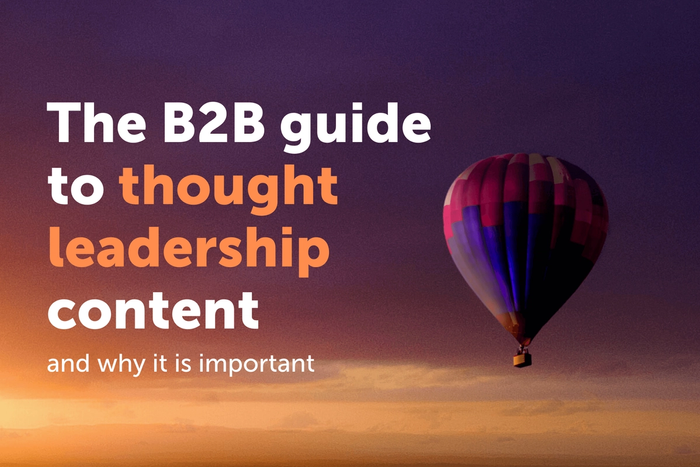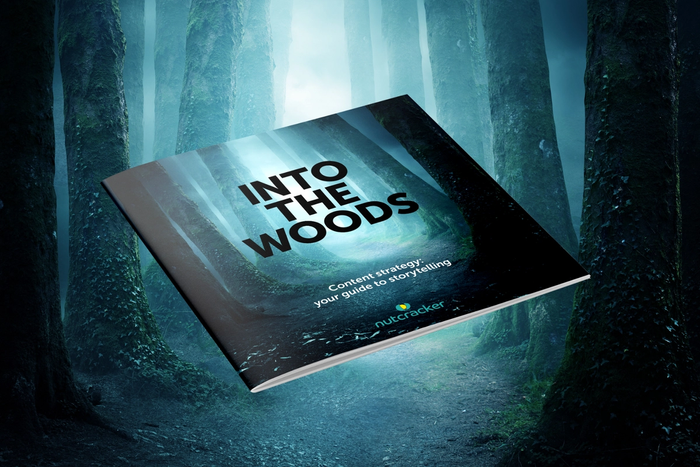Content Marketing & SEO
Storytelling in marketing: what’s your brand’s happily ever after?
How storytelling in marketing can create your brand's happily ever after
In today's crowded market, simply listing product benefits isn't enough to capture attention. Storytelling in marketing is the powerful differentiator, transforming your message from a mere pitch into a captivating narrative. It's how you establish a deep connection with your audience, convey your unique value, and ultimately drive results. Exceptional storytelling goes beyond just looking good; it has the power to influence conversions, attract ideal customers, and significantly improve your marketing ROI.
So, how do you craft a compelling marketing story that resonates and delivers a "happily ever after" for your clients? It's all about putting your customer at the heart of the narrative.
Know your protagonist by understanding your customer base
Any decent fiction author will tell you: to write a good story, you need to understand who your main character is. In marketing, your main character is your client. Who are they? Where do they come from? What are their hopes, dreams, and fears? To truly position your product or service as the only possible means of achieving their goals, you need to understand their quest.
This is all about persona building, and there are many ways to make this task easier and more accurate:
- Dive into your data and use Google Analytics to discover where your website visitors are coming from, their demographics, and their online behaviour. This helps validate if your traffic aligns with your target customer base.
- Gather direct feedback by conducting customer surveys to identify the persistent problems your clients face. Better yet, speak directly with your key accounts to hear their challenges firsthand. The key here is not make assumptions and listen to what your clients classify as persistent problems.
- Monitor social conversations by keeping an eye on social media channels for mentions of your brand, your competitors, or topics relevant to your industry. Observe which publications your target audience follows online. This not only builds a clearer picture of your customer but also reveals the kind of stories and challenges they find most compelling.
Define the antagonist to know what's your client's 'Big Bad'
In many of the best stories, there's a formidable 'big bad' – Voldemort in Harry Potter, Darth Vader in Star Wars, the Alien in… well, Alien. Your client has a 'big bad' too. It’s that nagging, unresolved issue they face daily, a conundrum they can't solve on their own. This 'big bad' is often the very reason they turn to Google in the first first place.
Perhaps the 'big bad' for your target audience is:
- Ineffective team management
- Outdated systems
- Simply inefficiency or time-consuming projects
- A lack of clarity or visibility
- Missed opportunities
It’s these specific pain points that you need to make the villain of your story. When you know what the 'big bad' is for your client, you can begin to position your brand as the heroic solution to defeat it.
Showcasing the 'Big Bad' and your solution
Consider 'The Wolf' from HP Studios, an advert crafted like a hacker thriller in the vein of Mr. Robot. It brilliantly highlights the pervasive issue of printer security in a way that hooks the viewer like any good movie – but crucially, it keeps its purpose clear throughout. It transforms a mundane topic into an urgent threat, then subtly positions HP as the protector.
When you clearly define the 'big bad' for your target audience, you can start framing your brand as the essential tool to achieve their desired outcome.
Achieving the customer's 'Happily Ever After'
Many businesses believe that effective marketing is simply listing off a ream of product benefits, incorrectly assuming their target audience will be reeled in. However, in a crowded market where everyone claims their product or service is the best, it's not enough to focus solely on your product's features.
The only way to transform a product from a 'nice-to-have' into a 'need-to-have' is to:
- Demonstrate empathy and show your customer you truly understand their goals.
- Illustrate the path by clearly showing how your product or service will help them get there – how it slays their 'dragon' and leads to their personal 'happily ever after'.
Speak their language and connect with authenticity
Let's face it: B2B businesses, by their nature, can sometimes be quite dry, and it’s easy to lose people in jargon. However, if you draw people in by speaking to them in terms they genuinely understand, directly referring to their specific pain points and aspirations , that's when you truly strike a chord.
Look, for example, at one of Google's Adwords Stories. Instead of drilling down into the nitty-gritty technical details, it tells the human story of how a growing business built a community around locally sourced food and used Google Adwords to expand its reach. A business owner can immediately relate to that narrative, seeing themselves in the story and envisioning how they, too, could use that service to bring them one step closer to their 'happily ever after'.
Create your brand's compelling story
To tell a truly compelling marketing story, you need to answer a few key questions: What is my client's 'happily ever after'? What is the 'dragon' they need to slay, and what tool (your product or service) do they need to use to slay it?
By mastering the art of customer-centric storytelling, you can move beyond features and benefits to build genuine connections, differentiate your brand, and inspire action that leads to real business growth and client happily ever afters. For a real-world example of how we helped a B2B consultancy transform its brand narrative, explore our case study on Agile Solutions' brand transformation.
Ready to tell your brand's compelling story and connect with your audience on a deeper level?
Download The Nutcracker Guide to B2B Storytelling: Crafting Narratives That Convert.
Contact Nutcracker Agency today for expert content marketing and storytelling strategies that drive results.
Who's the author?
This post was written by
, Chief Storyteller at Nutcracker Agency. Charlotte Delaney is an experienced story teller that specialises in helping tech, B2B and green-tech brands find their voice, turning complex into clear and compelling.As Chief Storyteller, Charlotte leads the content team at Nutcracker, creating campaigns that resonate, build trust and deliver results. Her mantra is to keep it simple and tell it straight, putting audience needs before features.
Before Nutcracker, Charlotte worked in journalism and marketing roles, honing her skills in translating technical subjects into stories. Outside of work she’s an avid skater (she’s passed all her ice-skating grades) and a passionate advocate for thoughtful, people-centred content.
Get in touch with Charlotte at hello@nutcrackeragency.com to see how her storytelling can help your brand.
Share this:





